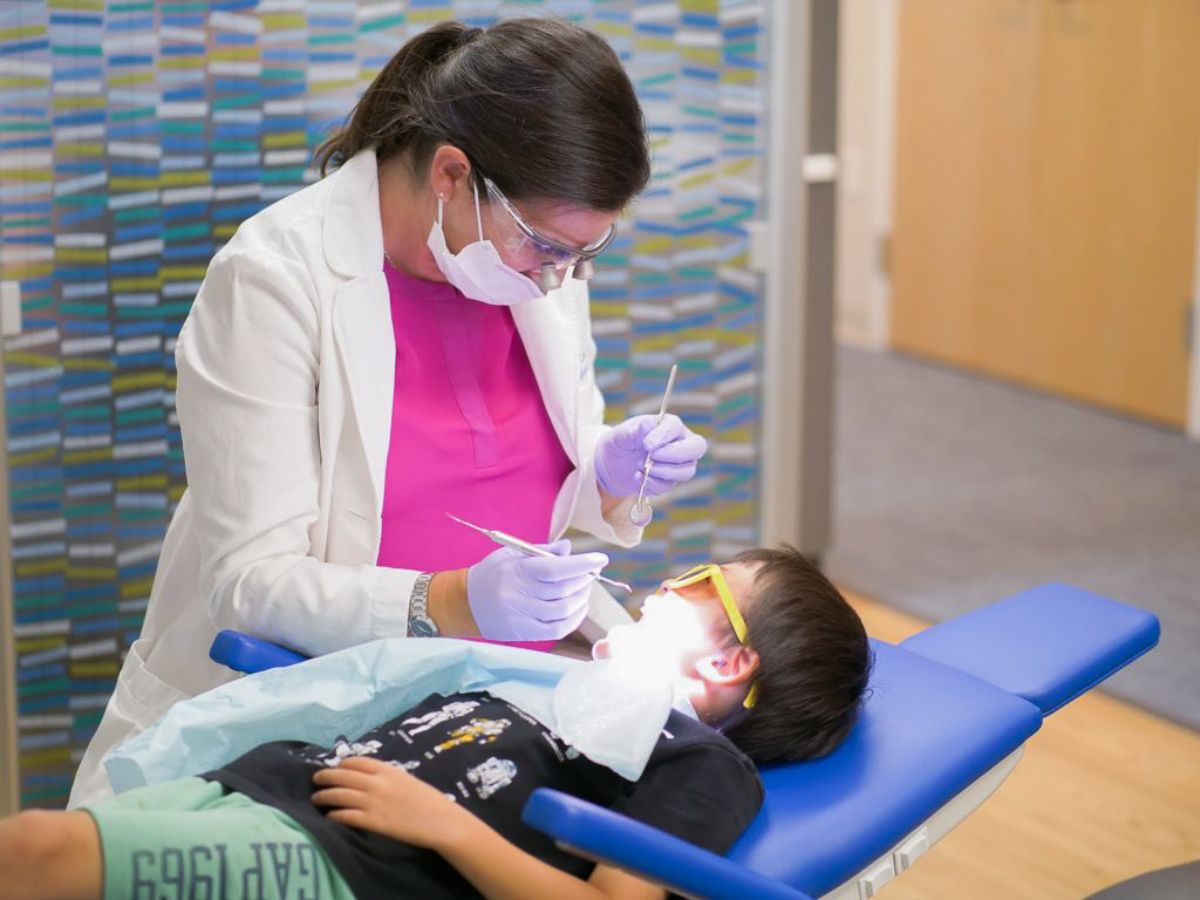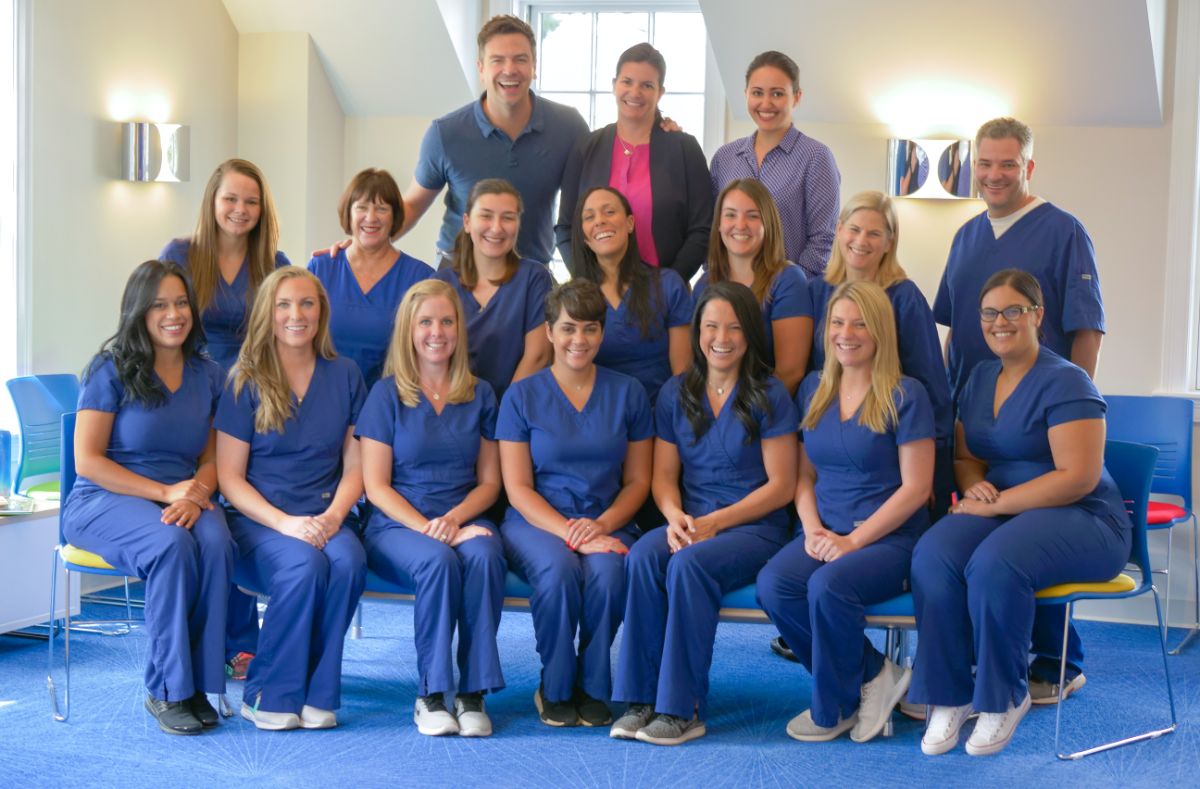Achieving a straighter smile takes a lot of hard work and dedication. For the best results, patients must also follow the guidelines their orthodontist sets out for them. These guidelines include maintaining an excellent oral hygiene routine, which plays a vital role in the treatment process! This is especially important for braces patients since the brackets and wires can trap food particles against the teeth and allow bacteria to flourish. It can be challenging to clean around braces, but plaque can build up without proper dental hygiene techniques and lead to tooth decay, damaged enamel, and even gum disease.
If left untreated, these issues can interrupt a patient’s treatment plan by causing delays and potentially affecting the final results. Braces may even need to be removed temporarily to resolve the problem in severe cases. At Coppe + Sears, our goal is to help patients achieve a beautifully aligned smile in the shortest amount of time possible. Patients can help us accomplish this by staying on top of their oral hygiene game! Keep reading to learn more about maintaining a healthy smile throughout the treatment process.
Brush every day, at least twice a day
Plaque can form in as little as 48 hours, so patients should never give it a chance to get comfortable! We recommend brushing once in the morning, again after every meal, and before bed. We realize this may not always be possible, though. At a minimum, patients should brush every morning and night for at least two minutes each time. When it is not possible to brush immediately after a meal, rinsing with water can help flush out any lingering food particles.
Use the right kind of toothbrush
No particular type of toothbrush needs to be used with braces, but it should have soft bristles. Brackets are already applying gentle force to the teeth in order to move them, and using a soft-bristled brush will help reduce additional stress on them. We also recommend manual toothbrushes for the extra power they provide. Although manual toothbrushes are perfectly capable of keeping teeth clean, they can sometimes leave food debris and plaque behind, even with thorough brushing.
Choose a toothpaste that has fluoride
As with toothbrushes, there is no specific toothpaste recommended for brushing with braces, but it should contain fluoride. Fluoride is beneficial in many ways, as it strengthens the tooth enamel, reduces the risk of tooth decay, and helps minimize acid erosion caused by some foods and drinks. Patients should use fluoride toothpaste even if they live in an area with fluoridated water.
Brush carefully and efficiently
Most patients will need to adjust their brushing technique once they have braces placed on their teeth. For the best results, stick to the following guidelines.
- Hold the toothbrush against the front sides of the teeth, and move the toothbrush in small circular motions. Go from tooth to tooth, following the regular curve of the gums and teeth.
- Brush each tooth for several seconds, carefully and slowly. Make sure all food particles are reached and removed along the gum line, between the braces, and on the surface of each tooth.
- Take care to brush the biting surfaces of the teeth, the back sides of the teeth, and behind the molars.
- Brush the roof of the mouth and tongue before rinsing.
- Angle the brush head against each bracket and brush under the wires as well.

Floss every night before bed
Flossing can be a bit time-consuming, but it is an essential component of any good oral hygiene routine. Braces patients need to floss between their teeth and get under the archwire. Floss threaders can make this a much simpler process! This reusable tool has a stiff end that can get in between the brackets and under the archwire more easily. These simple steps will also help ensure the best flossing method.
- Slide a piece of floss about 18 inches long under the wire, above the space between the two teeth.
- Insert the floss halfway through, then hold both ends of the floss. Carefully slide the floss up and down a few times between the teeth. When the tooth is clean, there should be a slight squeaking sound.
- Floss the gum line with the floss in the shape of a “C” and below the gum line with a soft up and down motion. Be gentle and try not to apply too much pressure when flossing around the archwire.
- Gently remove the floss, thread it under the next wire, and repeat the steps above.
It can take a while to get the hang of it, but a little effort goes a long way! Being meticulous with flossing will keep the teeth and gums healthy, during and after the treatment process.
Make mouthwash part of the daily routine
Mouthwash should not be used to take the place of brushing or flossing, but it can be an excellent tool for boosting oral health! It covers areas of the mouth that a toothbrush and floss may not be able to reach, like the gums and other soft tissues. Rinses can also help patients who struggle with gingivitis, periodontal disease, or a chronically dry mouth. To make the most of these products, it helps to know the differences between cosmetic rinses and therapeutic mouthwashes.
For example, cosmetic rinses will temporarily improve bad breath and create a pleasant taste in the mouth. However, they cannot kill the bacteria that cause bad breath. On the other hand, therapeutic mouthwashes are designed to impact oral bacteria and introduce healthy nutrients into the mouth. Adding mouthwash into a dental hygiene routine leads to better breath, greater plaque prevention, and a reduced risk of cavities. Dr. Sears and the rest of our expert team are always happy to recommend mouthwashes designed for use with braces.
Avoid brushing too hard or too long
Everyone knows that not brushing often enough is bad for oral health, but overbrushing can also be detrimental to the teeth. Brushing too often or vigorously can lead to tooth sensitivity and wear the enamel down prematurely. It can also contribute to a receding gum line. Using a medium- or hard-bristled brush can be harsh on the teeth, as well, which can be amplified by overbrushing. This is another reason we recommend a toothbrush with soft bristles! Remember that technique is much more important than the amount of force used to clean the teeth.

Trust Coppe + Sears for the best in dental and orthodontic care
There is an important link between oral health and achieving a straighter smile. Following the guidelines set out by Dr. Sears and utilizing the tips above will ensure a healthy mouth while we work on producing a better bite! Our team is always here to help with questions or concerns about dental hygiene during treatment. To learn more about being proactive with oral health, get in touch today to schedule a FREE consultation or follow-up appointment with our Lexington office!
